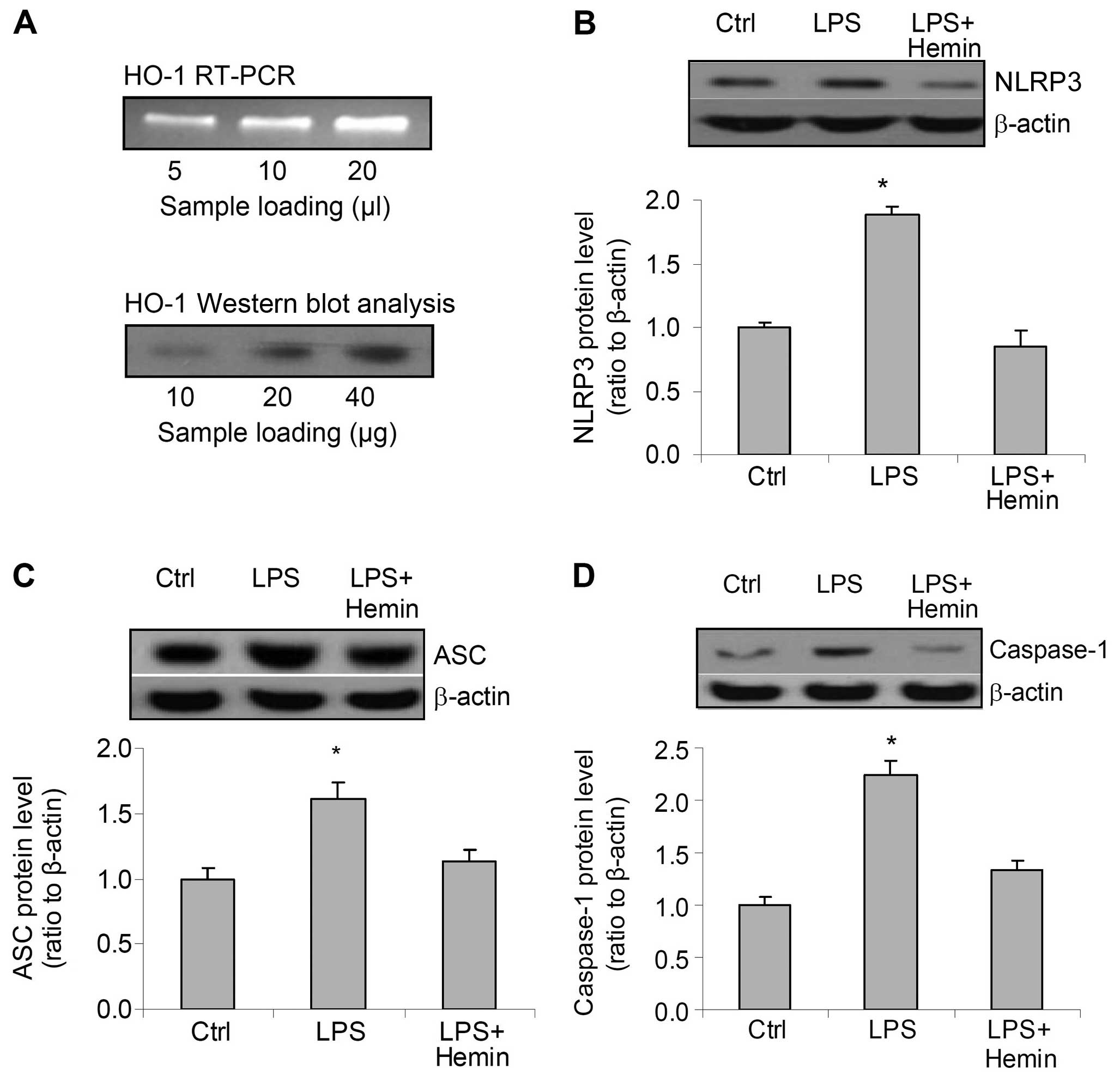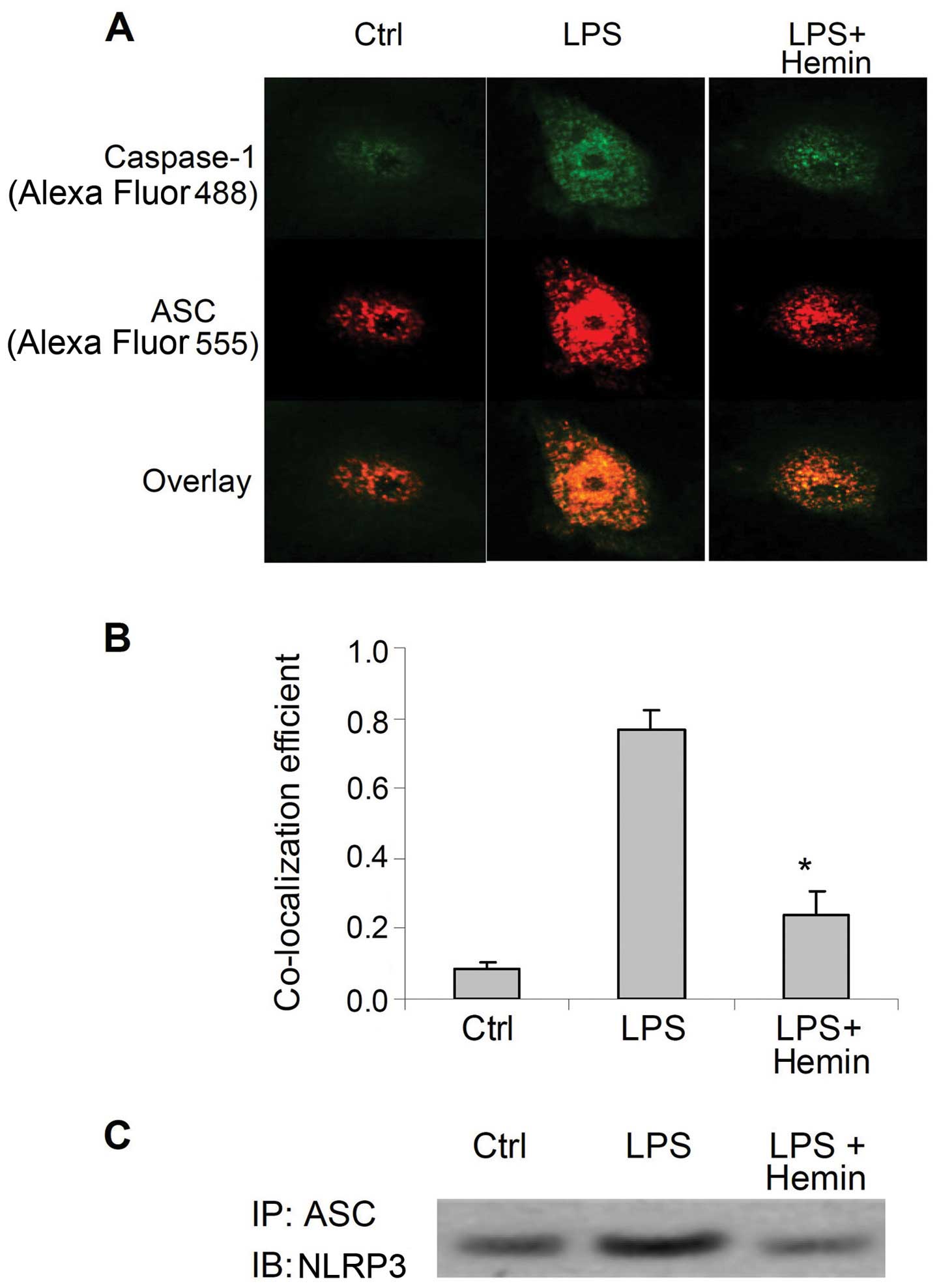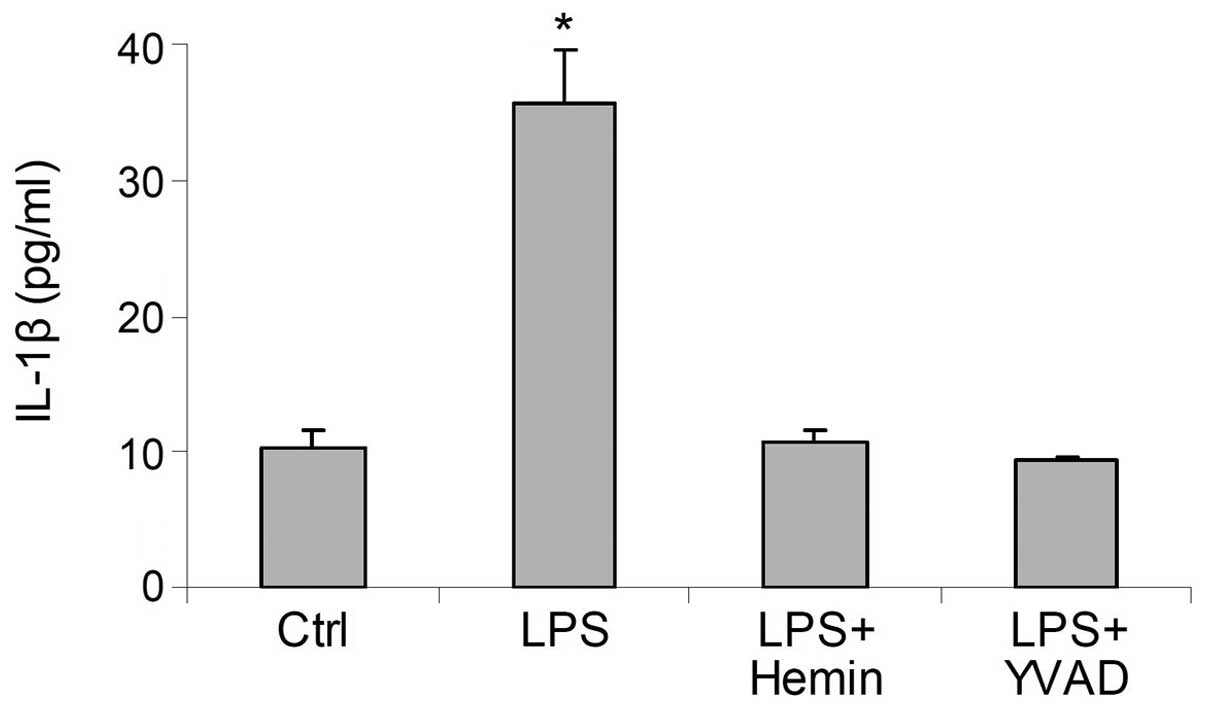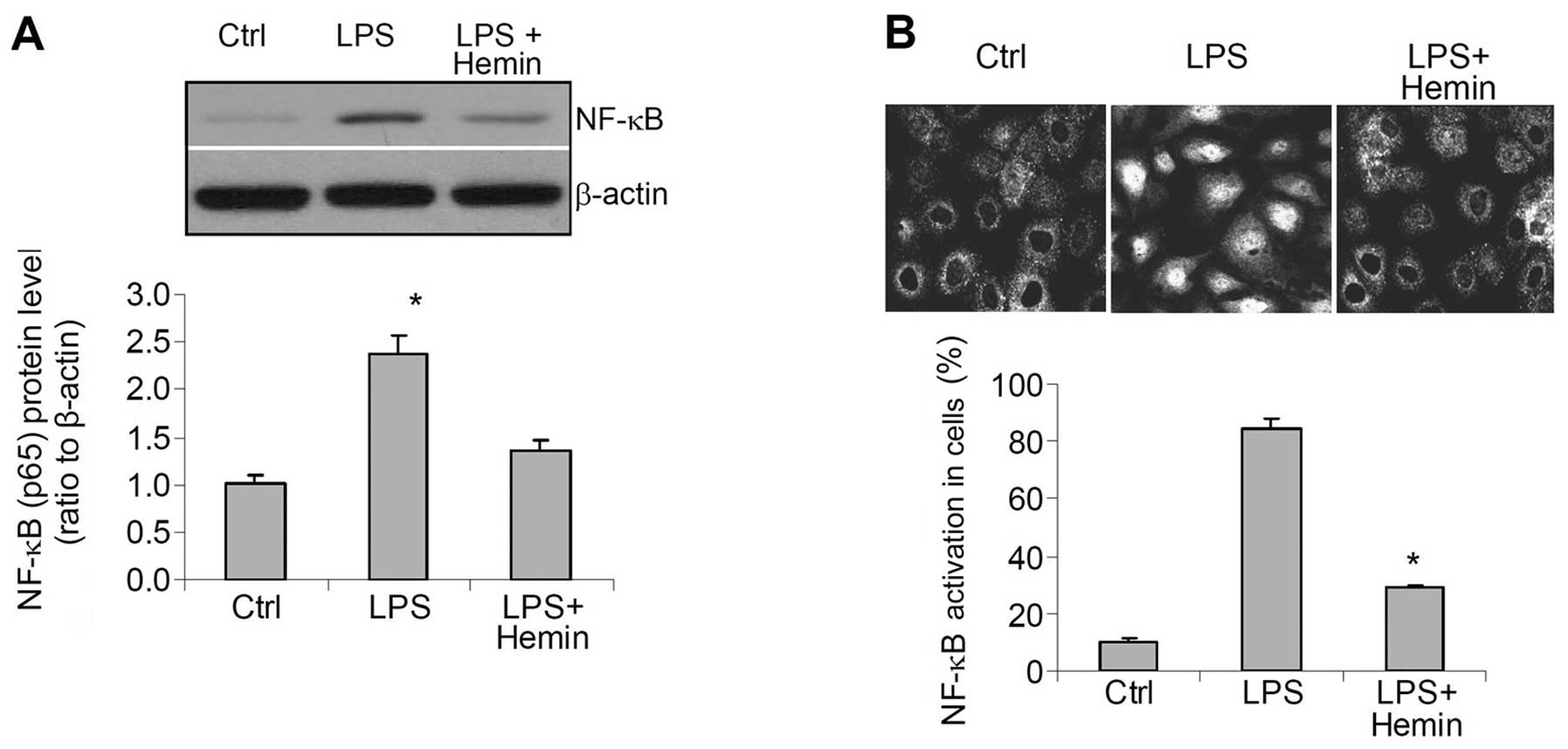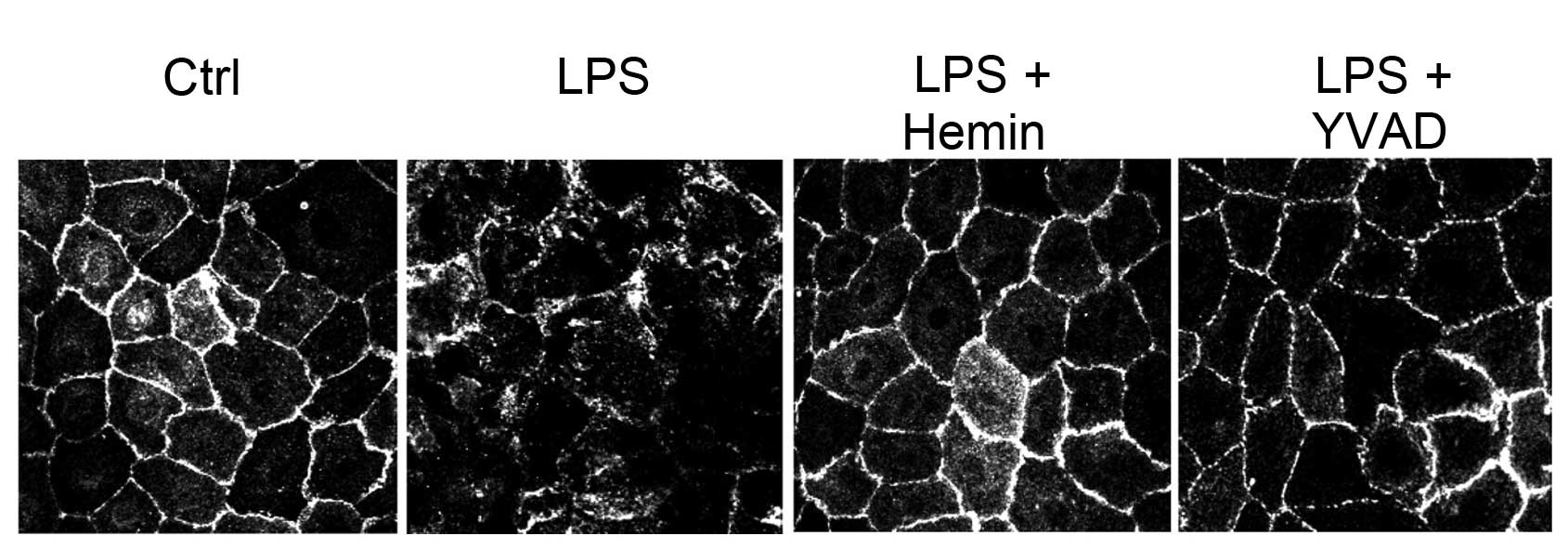|
1
|
Bascones A, Noronha S, Gómez M, Mota P,
Gonzalez Moles MA and Villarroel Dorrego M: Tissue destruction in
periodontitis: bacteria or cytokines fault? Quintessence Int.
36:299–306. 2005.PubMed/NCBI
|
|
2
|
Orozco A, Gemmell E, Bickel M and Seymour
GJ: Interleukin-1beta, interleukin-12 and interleukin-18 levels in
gingival fluid and serum of patients with gingivitis and
periodontitis. Oral Microbiol Immunol. 21:256–260. 2006. View Article : Google Scholar : PubMed/NCBI
|
|
3
|
Pedra JH, Cassel SL and Sutterwala FS:
Sensing pathogens and danger signals by the inflammasome. Curr Opin
Immunol. 21:10–16. 2009. View Article : Google Scholar
|
|
4
|
Schroder K and Tschopp J: The
inflammasomes. Cell. 140:821–832. 2010. View Article : Google Scholar : PubMed/NCBI
|
|
5
|
Broz P and Monack DM: Molecular mechanisms
of inflammasome activation during microbial infections. Immunol
Rev. 243:174–190. 2011. View Article : Google Scholar : PubMed/NCBI
|
|
6
|
Bostanci N, Emingil G, Saygan B, et al:
Expression and regulation of the NALP3 inflammasome complex in
periodontal diseases. Clin Exp Immunol. 157:415–422. 2009.
View Article : Google Scholar : PubMed/NCBI
|
|
7
|
Park E, Na HS, Song YR, Shin SY, Kim YM
and Chung J: Activation of NLRP3 and AIM2 inflammasomes by
Porphyromonas gingivalis infection. Infect Immun. 82:112–123. 2014.
View Article : Google Scholar : PubMed/NCBI
|
|
8
|
Yilmaz O, Sater AA, Yao L, Koutouzis T,
Pettengill M and Ojcius DM: ATP-dependent activation of an
inflammasome in primary gingival epithelial cells infected by
Porphyromonas gingivalis. Cell Microbiol. 12:188–198. 2010.
View Article : Google Scholar : PubMed/NCBI
|
|
9
|
Hua KF, Chou JC, Lam Y, et al:
Polyenylpyrrole derivatives inhibit NLRP3 inflammasome activation
and inflammatory mediator expression by reducing reactive oxygen
species production and mitogen-activated protein kinase activation.
PLoS One. 8:e767542013. View Article : Google Scholar
|
|
10
|
Kamo N, Ke B, Ghaffari AA, et al:
ASC/caspase-1/IL-1β signaling triggers inflammatory responses by
promoting HMGB1 induction in liver ischemia/reperfusion injury.
Hepatology. 58:351–362. 2013.
|
|
11
|
Yilmaz O: The chronicles of
Porphyromonas gingivalis: the microbium, the human oral
epithelium and their interplay. Microbiology. 154:2897–2903.
2008.
|
|
12
|
Pae HO, Kim EC and Chung HT: Integrative
survival response evoked by heme oxygenase-1 and heme metabolites.
J Clin Biochem Nutr. 42:197–203. 2008. View Article : Google Scholar : PubMed/NCBI
|
|
13
|
Maines MD: The heme oxygenase system: a
regulator of second messenger gases. Annu Rev Pharmacol Toxicol.
37:517–554. 1997. View Article : Google Scholar : PubMed/NCBI
|
|
14
|
Ndisang JF, Tabien HE and Wang R: Carbon
monoxide and hypertension. J Hypertens. 22:1057–1074. 2004.
View Article : Google Scholar : PubMed/NCBI
|
|
15
|
Abraham NG and Kappas A: Heme oxygenase
and the cardiovascular-renal system. Free Radic Biol Med. 39:1–25.
2005. View Article : Google Scholar : PubMed/NCBI
|
|
16
|
Villegas LR, Kluck D, Field C, et al:
Superoxide dismutase mimetic, MnTE-2-PyP, attenuates chronic
hypoxia-induced pulmonary hypertension, pulmonary vascular
remodeling, and activation of the NALP3 inflammasome. Antioxid
Redox Signal. 18:1753–1764. 2013. View Article : Google Scholar
|
|
17
|
Komada T, Usui F, Shirasuna K, et al: ASC
in renal collecting duct epithelial cells contributes to
inflammation and injury after unilateral ureteral obstruction. Am J
Pathol. 184:1287–1298. 2014. View Article : Google Scholar : PubMed/NCBI
|
|
18
|
Kim SJ and Lee SM: NLRP3 inflammasome
activation in D-galactosamine and lipopolysaccharide-induced acute
liver failure: role of heme oxygenase-1. Free Radic Biol Med.
65:997–1004. 2013. View Article : Google Scholar : PubMed/NCBI
|
|
19
|
Luo YP, Jiang L, Kang K, et al: Hemin
inhibits NLRP3 inflammasome activation in sepsis-induced acute lung
injury, involving heme oxygenase-1. Int Immunopharmacol. 20:24–32.
2014. View Article : Google Scholar : PubMed/NCBI
|
|
20
|
Han WQ, Zhu Q, Hu J, Li PL, Zhang F and Li
N: Hypoxia-inducible factor prolyl-hydroxylase-2 mediates
transforming growth factor beta 1-induced epithelial-mesenchymal
transition in renal tubular cells. Biochim Biophys Acta.
1833:1454–1462. 2013. View Article : Google Scholar
|
|
21
|
Yu X, Deng L, Wang D, et al: Mechanism of
TNF-α autocrine effects in hypoxic cardiomyocytes: initiated by
hypoxia inducible factor 1α, presented by exosomes. J Mol Cell
Cardiol. 53:848–857. 2012.
|
|
22
|
Zhu Q, Wang Z, Xia M, Li P-L, Zhang F and
Li N: Overexpression of HIF-1α transgene in the renal medulla
attenuated salt sensitive hypertension in Dahl S rats. Biochim
Biophys Acta. 1822:936–941. 2012.
|
|
23
|
Zinchuk V, Zinchuk O and Okada T:
Quantitative colocalization analysis of multicolor confocal
immunofluorescence microscopy images: pushing pixels to explore
biological phenomena. Acta Histochem Cytochem. 40:101–111. 2007.
View Article : Google Scholar
|
|
24
|
Zhong Y, Liu T, Lai W, Tan Y, Tian D and
Guo Z: Heme oxygenase-1-mediated reactive oxygen species reduction
is involved in the inhibitory effect of curcumin on
lipopolysaccharide-induced monocyte chemoattractant protein-1
production in RAW264.7 macrophages. Mol Med Rep. 7:242–246.
2013.
|
|
25
|
Tsai CH, Yang SF, Lee SS and Chang YC:
Augmented heme oxygenase-1 expression in areca quid
chewing-associated oral submucous fibrosis. Oral Dis. 15:281–286.
2009. View Article : Google Scholar : PubMed/NCBI
|
|
26
|
Milward MR, Chapple IL, Wright HJ, Millard
JL, Matthews JB and Cooper PR: Differential activation of NF-kappaB
and gene expression in oral epithelial cells by periodontal
pathogens. Clin Exp Immunol. 148:307–324. 2007. View Article : Google Scholar : PubMed/NCBI
|
|
27
|
Haines DD, Lekli I, Teissier P, Bak I and
Tosaki A: Role of haeme oxygenase-1 in resolution of oxidative
stress-related pathologies: focus on cardiovascular, lung,
neurological and kidney disorders. Acta Physiol (Oxf). 204:487–501.
2012. View Article : Google Scholar : PubMed/NCBI
|
|
28
|
Tseng HC, Lee IT, Lin CC, et al: IL-1β
promotes corneal epithelial cell migration by increasing MMP-9
expression through NF-κB- and AP-1-dependent pathways. PLoS One.
8:e579552013.
|
|
29
|
Viñuales C1, Gascón S, Barranquero C,
Osada J and Rodríguez-Yoldi MJ: Interleukin-1beta reduces galactose
transport in intestinal epithelial cells in a NF-κB and protein
kinase C-dependent manner. Vet Immunol Immunopathol. 155:171–181.
2013.PubMed/NCBI
|
|
30
|
He D, Su Y, Usatyuk PV, et al:
Lysophosphatidic acid enhances pulmonary epithelial barrier
integrity and protects endotoxin-induced epithelial barrier
disruption and lung injury. J Biol Chem. 284:24123–24132. 2009.
View Article : Google Scholar : PubMed/NCBI
|



